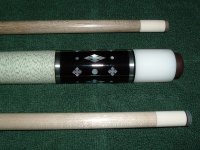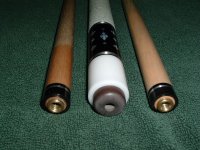manwon said:To my knowledge, a tight growth pattern can only be achieved by slow natural growth during optimum growth conditions, ie plenty of rain, and no outside interference.
Tree's, that would fit the bill as old growth are tree's, that have not been effected by a disease, and have been left alone for hundreds of years.
The growth rings whether outside or inside are the same over time. As the tree grows the rings will compress until the center almost appears solid. Another factor is that the tighter the growth rings, the stronger and especially heaver the wood will be due to compression.
I believe that the wood coming from the Great lakes is really fantastic, and I have seen some very stunning Birdseye and Burls that have been brought out of the great Lakes that are unlike anything you can find today.
However, if I had a choice I would purchase old wood that has not been exposed to moisture for a hundred years, because I suspect that it effects the properties of the wood, I do not know if that is good or bad, but I am certain that there is an effect.
This is why I purchase the older cues when ever possible.
Merry Christmas
Manwon
I think you need to have lesser rain and lower temperature for the wood to grow slower, I am not sure, but I think that is why the wood from up north is more desirable.
If a shaft has more rings per inch, it is denser and so should weight more. What is the average weight of a finished shaft with the old growth wood?
Going back to the question, I have been very impressed with Blue Grass 's shaft wood quality.

